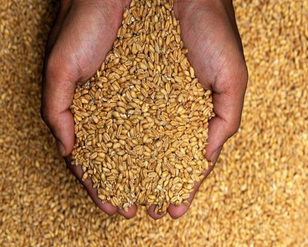In the evolving landscape of agriculture, staying ahead requires innovative solutions that can address both traditional challenges and new dynamics. Enter agrawau, a concept that’s capturing the imagination of farmers, agricultural entrepreneurs, and sustainability advocates. This post will uncover how agrawau can transform your farming practices, elevate your business, and contribute to a sustainable future. Join us as we explore the key aspects of agrawau and discover actionable insights for leveraging its potential in the world of agriculture.
What is Agrawau?
At its core, it represents a holistic approach to farming that integrates modern technology, sustainable practices, and community engagement. Unlike traditional methods, it emphasizes a balanced ecosystem where technology and nature work hand in hand. It seeks to optimize resource use, boost productivity, and minimize environmental impact. By focusing on these goals, agrawau offers a promising solution to some of the most pressing issues facing the agricultural industry today.
Agrawau’s significance extends beyond just farming techniques. It promotes a mindset that values innovation, collaboration, and continuous learning. This makes it particularly appealing to agricultural entrepreneurs looking to disrupt the status quo and drive meaningful change. For these pioneers, agrawau provides a framework that supports experimentation and iteration, ultimately leading to more resilient and adaptable farming systems.
The appeal of agrawau also lies in its commitment to sustainability. In a world increasingly aware of environmental challenges, this approach champions regenerative practices that restore soil health, enhance biodiversity, and reduce carbon footprints. For sustainability advocates, agrawau offers a tangible way to contribute to global efforts aimed at preserving our planet for future generations.

The Origins of Agrawau
Agrawau’s roots can be traced back to a fusion of ancient wisdom and modern innovation. Drawing from traditional agricultural practices that prioritize harmony with nature, agrawau incorporates cutting-edge technology to enhance efficiency and productivity. This blend of the old and the new creates a dynamic approach that is both respectful of the past and forward-looking.
One of the key influences on agrawau is the permaculture movement, which advocates for sustainable land use and ethical management of resources. By taking inspiration from permaculture principles, agrawau emphasizes the importance of designing systems that mimic natural ecosystems. This results in reduced waste, improved soil and plant health, and greater resilience against external challenges like climate change.
Agrawau also benefits from advancements in technology, such as precision agriculture and data analytics. These tools allow farmers to gather real-time insights, make informed decisions, and optimize various aspects of their operations. By harnessing the power of data, agrawau empowers farmers to achieve better yields, reduce resource wastage, and enhance overall efficiency.
Agrawau Techniques for Farmers
For farmers seeking to incorporate agrawau into their operations, several key techniques can be utilized. One such approach is crop diversification, which involves cultivating a variety of crops within a single farm. This practice not only enhances soil fertility but also mitigates the risk of crop failure due to pests or adverse weather conditions. By diversifying their crops, farmers can create a more self-sustaining ecosystem and increase their resilience to external shocks.
Another essential technique in agrawau is the integration of livestock and crops. This symbiotic relationship allows for efficient nutrient cycling, where animal waste enriches the soil, and crops provide fodder for livestock. This closed-loop system maximizes resource utilization, reduces reliance on chemical fertilizers, and improves overall farm sustainability.
Agrawau also encourages the adoption of agroforestry, which involves integrating trees and shrubs into agricultural landscapes. Beyond enhancing biodiversity and improving soil health, agroforestry provides additional benefits such as increased carbon sequestration, windbreaks, and habitat for beneficial wildlife. By incorporating these elements into their farms, farmers can create more resilient and productive ecosystems.

The Role of Technology in Agrawau
Technology plays a pivotal role in the success of agrawau, enabling farmers to make data-driven decisions and optimize their operations. One of the most significant technological advancements in this field is precision agriculture, which leverages GPS, sensors, and drones to gather and analyze data on soil health, crop growth, and environmental conditions. These insights help farmers apply inputs more accurately, minimizing waste and maximizing efficiency.
In addition to precision agriculture, data analytics tools provide valuable insights into various aspects of farm management. By analyzing historical data and current trends, farmers can identify patterns, anticipate challenges, and make informed decisions. This proactive approach enhances productivity, reduces risks, and improves overall farm performance.
Furthermore, technology facilitates communication and collaboration among farmers, researchers, and other stakeholders. Online platforms and mobile apps enable knowledge sharing, resource exchange, and the formation of support networks. By connecting with like-minded individuals, farmers can access valuable expertise, share experiences, and collectively drive the advancement of agrawau practices.
Agrawau’s Impact on Sustainability
Agrawau’s commitment to sustainability is evident in its focus on regenerative practices that restore and enhance natural ecosystems. One such practice is no-till farming, which involves minimal soil disturbance during planting and cultivation. By preserving soil structure and reducing erosion, no-till farming improves soil health and increases carbon sequestration, contributing to climate change mitigation.
Cover cropping is another crucial aspect of agrawau’s sustainability framework. By growing cover crops during fallow periods, farmers can protect the soil from erosion, enhance organic matter, and suppress weeds. These benefits translate into improved soil fertility, reduced reliance on chemical inputs, and increased resilience to pests and diseases.
Water conservation is a fundamental principle of agrawau, addressing the growing challenge of water scarcity. Techniques such as drip irrigation and rainwater harvesting optimize water usage, ensuring that crops receive adequate moisture while minimizing waste. By prioritizing efficient water management, agrawau contributes to the long-term sustainability of agricultural systems and helps safeguard this precious resource for future generations.
Agrawau for Agricultural Entrepreneurs
For agricultural entrepreneurs looking to make their mark, agrawau offers a wealth of opportunities to innovate and drive change. By adopting agrawau principles, entrepreneurs can differentiate themselves from competitors, attract environmentally conscious consumers, and build a reputation for sustainability.
One way entrepreneurs can leverage agrawau is by developing value-added products that cater to the growing demand for sustainable and ethically produced goods. Whether it’s organic fertilizers, eco-friendly packaging, or specialty crops, there are numerous avenues for entrepreneurs to capitalize on consumer preferences and create a profitable niche.
Collaboration and partnerships are also critical components of agrawau for entrepreneurs. By working with other stakeholders, such as researchers, NGOs, and government agencies, entrepreneurs can access resources, funding, and expertise to support their ventures. This collaborative approach fosters innovation, reduces risks, and accelerates the adoption of it practices.
Agrawau and Community Engagement
Agrawau recognizes the importance of community engagement in achieving its goals. By fostering collaboration among farmers, consumers, and other stakeholders, it creates a sense of shared responsibility and collective action. This community-driven approach not only strengthens local economies but also promotes social cohesion and resilience.
One way to engage the community is through educational initiatives that raise awareness about agrawau practices and their benefits. Workshops, field days, and online courses can equip farmers and consumers with the knowledge and skills needed to support sustainable agriculture. By empowering individuals with the right tools and information, it can inspire positive change at the grassroots level.
Community-supported agriculture (CSA) is another effective strategy for engaging the community. By connecting consumers directly with farmers, CSA programs offer fresh, locally sourced produce while fostering a deeper understanding of the agricultural process. This direct relationship helps build trust, encourages transparency, and supports farmers’ livelihoods.
Agrawau’s Role in Climate Adaptation
Agrawau’s emphasis on sustainability makes it well-suited to address the challenges posed by climate change. By promoting practices that enhance ecosystem resilience and reduce greenhouse gas emissions, agrawau contributes to climate adaptation and mitigation efforts.
For example, it encourages the adoption of climate-smart agriculture techniques, such as drought-resistant crops and water-efficient irrigation systems. These innovations help farmers cope with changing weather patterns, ensuring food security and reducing vulnerability to climate-related shocks.
Carbon sequestration is another critical component of agrawau’s climate adaptation strategy. By promoting practices like agroforestry and cover cropping, it enhances the capacity of agricultural systems to capture and store carbon. This not only mitigates climate change but also improves soil fertility and supports biodiversity.
Challenges and Opportunities in Agrawau
While it presents numerous benefits, it also faces challenges that need to be addressed for widespread adoption. One significant challenge is the initial investment required for implementing agrawau practices and technologies. For small-scale farmers, access to financing and resources may be limited, hindering their ability to adopt these innovations.
Another challenge is the need for education and training to equip farmers with the skills and knowledge necessary to implement it effectively. Overcoming these barriers requires collaboration between governments, NGOs, and other stakeholders to provide support and resources to farmers.
Despite these challenges, it offers significant opportunities for growth and development. The increasing demand for sustainable and ethically produced agricultural products presents a lucrative market for farmers and entrepreneurs. By capitalizing on this trend, it practitioners can achieve economic success while contributing to global sustainability goals.
Agrawau Success Stories
Across the globe, it is making a positive impact on farming communities and businesses. In India, a group of smallholder farmers adopted it practices to improve soil health and increase crop yields. By diversifying their crops and implementing agroforestry, these farmers achieved higher incomes and enhanced food security for their families.
In the United States, an agricultural entrepreneur leveraged it principles to develop a line of organic fertilizers. By tapping into the growing demand for sustainable agricultural inputs, the entrepreneur built a successful business that supports farmers in their transition to more sustainable practices.
These success stories demonstrate the potential of it to drive positive change in agriculture. By sharing these examples, we hope to inspire more farmers, entrepreneurs, and advocates to explore the possibilities of it in their own contexts.
The Future of Agrawau
The future of it looks promising, with increasing interest from governments, businesses, and consumers. As more stakeholders recognize the importance of sustainable agriculture, it is poised to play a significant role in shaping the future of food production.
Technological advancements will continue to drive the evolution of it, providing new tools and techniques to enhance efficiency and productivity. Innovations in areas like artificial intelligence, robotics, and biotechnology will open up new possibilities for it practitioners, enabling them to achieve even greater levels of sustainability and resilience.
Ultimately, the success of it depends on the collective efforts of farmers, entrepreneurs, policymakers, and consumers. By working together to promote sustainable practices, we can create a more resilient and equitable food system that benefits both people and the planet.
Taking the First Steps with Agrawau
If you’re inspired to explore the potential of it, there are several actionable steps you can take to get started. Begin by evaluating your current farming practices and identifying areas where it techniques can be integrated. Consider attending workshops or online courses to gain a deeper understanding of agrawau principles and how they can be applied to your specific context.
Reach out to local agricultural organizations, research institutions, or NGOs that specialize in sustainable agriculture. These groups can provide valuable resources, support, and guidance to help you implement it practices effectively.
Finally, engage with the agrawau community by joining forums, networks, or social media groups dedicated to sustainable agriculture. By connecting with like-minded individuals, you can share experiences, learn from others, and contribute to the ongoing advancement of it.
it represents a powerful opportunity to transform agriculture for the better. By adopting its principles and practices, we can create a more sustainable, resilient, and equitable food system that benefits everyone.







